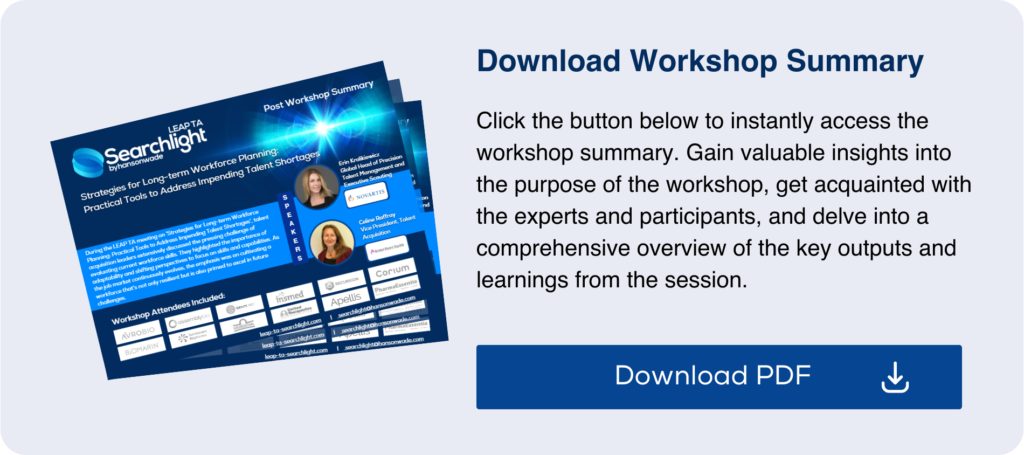Long-term Workforce Planning: A Deep Dive into New-age Strategies
Shifting Gears: From Qualifications to Potential
In a world where the job market is continuously evolving, TA leaders are tasked with the challenge of assessing and developing the skills of the present workforce while ensuring flexibility and agility. The recent LEAP TA Searchlight Network workshop was an eye-opener in this context. Celine Raffray, the Vice President of Talent Acquisition at Bristol-Myers Squibb, emphasized the pressing need for TA leaders to shift from a traditional profile-based approach – one that leaned heavily on degrees and qualifications. Instead, it’s time to prioritize recognizing potential in candidates during the hiring process. This pivot not only challenges the traditional hiring mindset but also persuades R&D leaders to embrace alternative indicators of potential. The success stories shared during the session were a testament to the immense benefits of this approach, showcasing exceptional hires and significant improvements in team performance.
Embracing Alternative Indicators for Future-Ready Workforces
Erin Krolikiewicz, the Global Head of Precision Talent Management and Executive Scouting at Novartis, further expanded on the conversation. Steering the dialogue toward strategies suitable for the R&D sector, she shed light on several innovative indicators and tools. Candidates’ problem-solving capabilities, adaptability, creativity, and fervor for the industry have emerged as some pivotal markers to evaluate the future workforce. The workshop highlighted contemporary tools like competency-based interviews, practical assessments, and AI-driven candidate evaluations. Such strategies and tools are aimed at efficiently understanding a candidate’s inherent skills, their potential, and aptitude for growth in an ever-changing professional landscape.
Feedback and Reflections: The Road Ahead
The workshop was a trove of insights and learning for many attendees. Some noteworthy feedback from participants highlighted the significance of data-driven gap analysis, especially in the wake of organizational restructuring and the inevitable challenges that follow. The value of assessing not just the years of experience but the impact a candidate has had during those years was another profound realization. Above all, the discussion acted as a catalyst for introspection for many leaders. It urged them to evaluate the synergies within their organizations, especially between Talent Acquisition and Talent Management, and to optimize the movement and growth of key talent internally.
In essence, the future of talent acquisition and workforce planning is not just about hiring the most qualified – it’s about recognizing and nurturing potential, embracing innovation, and building resilient teams ready to take on tomorrow’s challenges through workforce planning.

